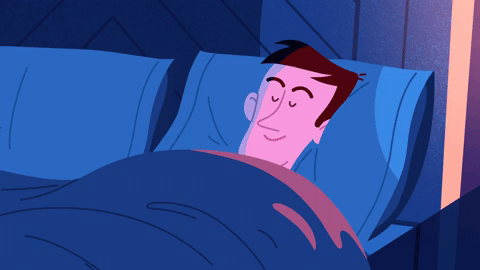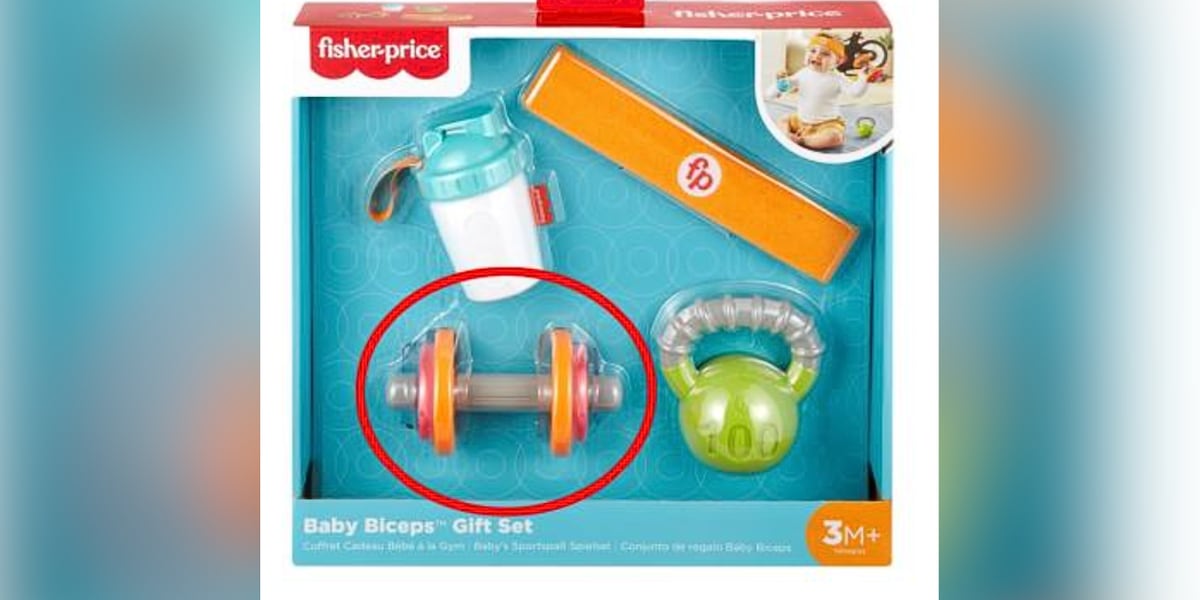- Pediatric Answers
- Posts
- My Kid Doesn’t Sleep. Help!
My Kid Doesn’t Sleep. Help!
Tips to get kids asleep. Are nightlights bad? Save an estimated $167 on orthopedic braces. A pink eye conclusion...hopefully. Recalls on loungers and dumbbells. A bark vs. honk.

💥 The first newsletter of every month is yours for free! After that, access all my newsletters with a premium subscription. To enjoy complete access to all content—both past and upcoming—click here for a 30-Day FREE TRIAL!
What's Inside

My Kid Doesn’t Sleep. Help!
There are few things more frustrating for a parent than a kid who can’t sleep. Exasperated parents come into my office everyday stating that they’ve tried everything and STILL they can’t get their child to sleep. The child is exhausted and ornery. The parent is exhausted and short-tempered. Everyone is in desperate need of a good night sleep.
While it’s true that some kids are naturally “better sleepers” than others (they seem to be able to fall asleep on command and sleep through anything), few people recognize sleep as a learned behavior. Just as with anything we do, we can learn good sleep habits or bad sleep habits.
Crash course on sleeping
If you’re really struggling with a “bad sleeper,” I’m going to give you a crash course in sleep training.
It’s ALL about strict adherence to a sleep routine. You probably remember learning about the classical training experiment of “Pavlov’s dogs” in your high school science class. In essence, the scientist, Pavlov, trained dogs to salivate at the sound of bell instead of food, by associating the bell with the food. In sleep training, we’re using the same scientific principle of training the brain to sleep with a certain routine. Here are the quick steps with the details to implementing listed afterwards.
Steps to training:
Make a detailed list of the things to do before going to bed, make the list 8-15 steps long (lasting anywhere from 15-30 mins).
Write the list on a paper labeled “Bedtime Routine.” (Tip: If your child is too young to read, use small pictures for each step instead of writing).
Post the list in the bedroom, near the bed.
Look at and read the list after every step.
Be rigid in following the list (in order and don’t get distracted).
After completing the list, get into bed.
If your kid is not asleep after 20 mins, get out of the bed and read in a chair until sleepy or 20 mins (whichever is sooner).
Go back to bed and try to sleep again (repeat steps 7 and 8 as much as needed until sleep occurs).
What time should I put my child to sleep?
The time for bed will change as the sleep training progresses. The first night, you should aim to put your child to bed at the time that they typically fall asleep. So if you’ve been starting the bedtime circus at 9 p.m., but the child doesn’t fall asleep until midnight, then the first night, put your child to bed at midnight. This means the bedtime routine would start at 11:30-11:45 p.m. (depending on the length of the routine).
Each subsequent night, put your child to bed 30 mins earlier until the desired bedtime is achieved. Depending on your child’s age, typical bedtimes are 7:30 p.m. (infants) to 10:00 p.m. (teens). Most school-aged kids should be in bed between 8-9 p.m.
The scientific studies show that the body can only adjust the circadian rhythm by 30 mins every 24 hours (this is why it can take so long to fully recover from jet lag). If your child is accustom to falling asleep very late, it will take time to adjust that natural sleep time.
What is a typical bedtime routine?
When you create the bedtime routine for your child, be very detailed. My first grader’s bedtime routine list (as an example) is:
Get undressed (clothes in hamper)
Go to the bathroom
Take a tub
Hang up towel
Lotion body
Put on pajamas
Brush teeth
Aquaphor lips
Brush out hair
Family prayers
Set out clothes to wear the next day
Child reads to mom
Mom reads a chapter from the book we’re reading together
Kiss goodnight
Lights out
If done correctly, the brain starts to release sleep hormones that signal your child to feel sleepy as you progress through the list. While my child may be a monkey during the first 3 steps, by the end, she’s super tired and ready to sleep. Keep in mind that kids need a bedtime. Try to put kids the same time every night (regardless of it being a school night or weekend).
How to create the perfect sleep environment
Make the room dark (use a small nightlight if needed). My kids all have blackout drapes in their rooms. It solves the problem of it being too light outside in the middle of the summer at 8 p.m. Dark also helps the body secrete the right amount of natural melatonin (which helps with sleep).
Keep the temperature just right—slightly cool. Science shows that sleep quality is slightly better when the room is cool (68-70 degrees) vs warm (74-76 degrees).
Quiet. Try to make the room quiet. Kids who have trouble sleeping don’t need more distractions. Also, try to avoid “white noise.” If there is a background music or white noise, the child will get conditioned to requiring that to sleep. As soon as the noise stops, the child wakes up. Don’t create unnecessary future problems for yourself.
Loose, comfortable clothes to sleep in. You want the pajamas to be a non-issue rather than a distraction.
Absolute No-No’s for bad sleepers
If your child is struggling with sleep issues, here are a few tips:
No media for 1 hour prior to bed
Don’t eat meals too late (it can be hard to digest a big meal right before bed, a small snack is ok).
Don’t do vigorous exercise within an hour of bedtime. You should however exercise during the day.
Don’t do anything on the bed, but sleep (no playing with toys, doing homework, etc.). The bed needs to be a conditioned sleep location only.
No media in the bedroom, period.
Avoid scary TV, movies, news, video games. Media with conflict, drama, anxiety, and violence can all carry over into creating sleep issues for kids.
No naps (unless the child is 3 years-old or younger).
It can take weeks to properly sleep train a child, but the results are well worth it. Good luck, may we all get a good night’s rest.

Fact Or Fiction: Are Nightlights Bad?

I had a parent tell me they heard that nightlights can be harmful to their baby’s eyes at night.
FALSE
A gentle nightlight isn’t going to cause any problems. A floodlight, maybe, but not a nightlight. 🙂

What I’m Seeing at Work: COVID…Still

We aren’t seeing a spike yet in RSV or influenza—I expect that to happen in the next month or so. What I am still seeing is COVID.
In a nutshell: Isolate for at least 24 hours “after both their symptoms are getting better overall, and they have not had a fever (and are not using fever-reducing medication).” Then stay home for another 5 days.
Here are the latest CDC guidelines on what to do if your child has COVID.


Money-Saving Tip: Orthopedic Braces
Most orthopedic braces given in an office are billed separately (often by the brace company).
The mark up is often significant.
If you have a high deductible plan (such that the cost of the brace won’t be covered until you meet the deductible), you could save serious money by buying the brace online (think Amazon Prime overnight delivery).
Simply explain that you have a high deductible plan and ask the doc what the brand and size is that you should order.
ESTIMATED COST SAVINGS: $167

WWWD: Pink Eye, Part III
I often joke that if it weren’t for my profession, we’d be at the doctor’s office weekly with one of our four kids. I use my skills at home all the time. Here, I’ll share a recent example from home and how I handled it, including the products I used. This isn’t an advertisement—I don’t have any financial interest in these products. I simply have parents ask me all the time about what to do in certain situations and the products I use.

This is how it started—a little inflamed, a bit goopy.

This is how it progressed. He woke up the next morning with his eye all covered in goop, swollen, miserable.

It’s essentially all better now. Crazy improvement from the second picture, eh?
Scenario: A couple of weeks ago, I shared my husband’s onset of pink eye. I thought it’d be helpful to show you how it got worse as he developed a complication, and how it’s looking much better now.
Our pink eye outcome
Well, things got worse before they got better. His pink eye turned into full-blown periorbital cellulitis. It was a bit rough, but after getting him antibiotic eye drops and oral meds (Augmentin), he started to get better.
Here’s how he’s looking now. As you can see (ha!), he’s looking (ha, again!) much better.
Pro Tips: We waited overnight to get my husband antibiotic eye drops. If we could have started them that night, I think he wouldn’t have had such a bad case. I guess my tip is: Get treatment asap.

Recalls & Alerts: Loungers & Dumbbells


Funny Things: Bark or Honk?
I had a cute patient the other day who would only respond to my questions with a sound that I can only describe as a cross between a dog-like “yawp” and a “honk.”
Me: What’s your name?
Kid: yaw-nk.
Me: Can you tell me how old you are?
Kid: yaw-nk.
I looked at his mom, who just sat there and shook her head in bewilderment.
Kids are the best!

Legal Disclaimer: The information provided in this article is for educational and informational purposes only. It is not intended as a substitute for professional advice or medical treatment. Always seek the advice of your physician or qualified healthcare provider with any questions you may have regarding a medical condition or the health and welfare of your child. We do not endorse any specific products or brands mentioned in this article. Readers are encouraged to perform their own research and consult with appropriate professionals before making any decisions based on the information provided herein.


:quality(70)/cloudfront-us-east-1.images.arcpublishing.com/cmg/2CR32IZXGVATRKFP4DSL3WPSVM.jpg)
